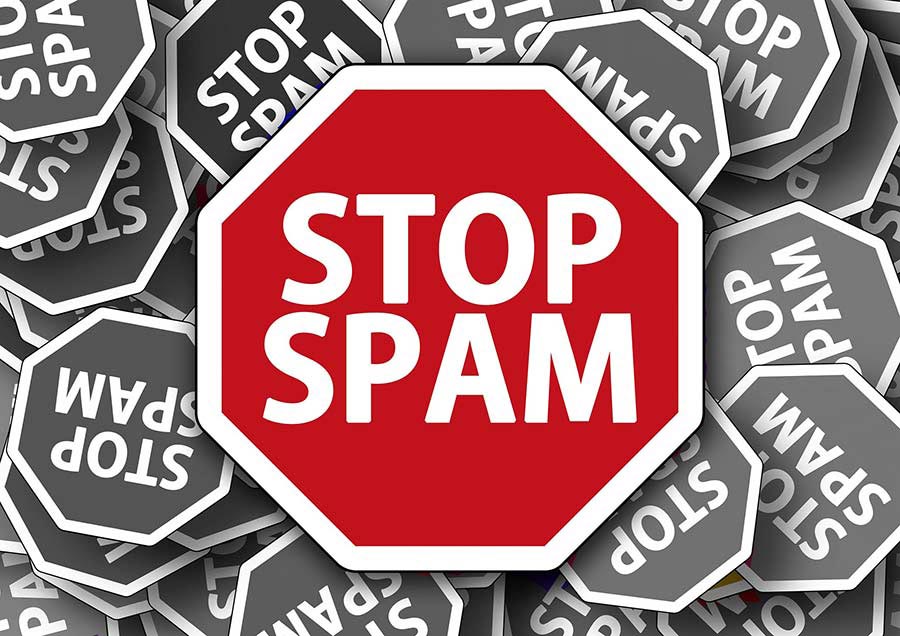Everyone that has ever had an email understands what the word ‘spam’ means. And most of us feel like we know where its current meaning originated from. And yes, it is related to SPAM meat. But not in the way you may have thought it is.
A widely spread misbelief is that the name of the brand SPAM became common for unwanted and often deceptive ads on the web because it was “fake meat”.
This myth was busted by a Today I Find Out article, dedicated to the origins of the term.
The media claims that in a short period of time the word spam became a synonym for “unwanted message” thanks to a 1970’s sketch from Monty Python’s Flying Circus.
(Spoiler Alert: The video of the sketch will be published at the end of this article)
Whatever the origins, the important thing is that nowadays in most minds spam is related to one thing and one thing only. It’s not the canned meat.
Internet spam is obnoxious, annoying, and could be even dangerous.

What Does Spam Stand for in Computer Terms
We, people, are unable to see things outside of our pre-defined point of view. In other words, spam means a lot of different things to different people.
While some “marketers” see spam as a credible way to “promote” their products or services, for the common internet user spam is just an obnoxious and irritating email or comment on their website. It doesn’t add any value, nor help in some way. Just the opposite.
The more authority your website has, the more spam comments you’ll receive.
According to Wikipedia the first-ever recorded act of spamming occurred in the 19th century. Of course, it wasn’t an act of internet spam. “The first recorded instance of a mass unsolicited commercial telegram is from May 1864, when some British politicians received an unsolicited telegram advertising a dentistry shop.” – The website’s article says.
Although there are some really funny answers to the question of what spam stands for, the official and serious definition ties the slang word to “unsolicited (electronic) messages”.
Definition of Spam
Electronic spamming is the use of electronic messaging systems to send an unsolicited message (spam), especially advertising, as well as sending messages repeatedly on the same site.
For the common internet, user spam is only annoying but for some of us, it is really dangerous. This is why there are legislation and laws that are trying to fight the existence of electronic spam.
But before we dig deeper into what are Spam Emails used for, let’s try to understand the subtle but important difference between spam and scam.
Scam and Spam – What is the Difference?
“Scam” and “spam” are common words in English. Nevertheless, I find it necessary to distinguish them from one another, because with the rise of the technology era, they’ve become almost indistinguishable.

They are often taken as synonymous words. Even more so since a lot of the scams use spam to achieve their goals. Even though they are often related, it is not necessary for a spam email to be a scam, nor for a scam to be spam(or even email).
In other words, frauds(scams) can have a lot of forms. Spam is almost always web-related and it is a way to promote something.
In a few words:
- Spam is a promotional email, SMS, or another type of ad. Its most specific characteristics are that such an advertisement is direct (it’s targeted to a person’s phone or email account), and it is unwanted(the spammers never asked you for your information, nor for your consent to receive their materials). Furthermore, spam emails are not a one-time thing. They are a repetitive and widely spread effort.
- A scam is simply a fraud. Online scams, as already mentioned, often use spam to achieve their goals.
What is Spam Email Used For
In a word, spam emails are a dishonest way of making money. Most of us will never open such an email, but there are people that do. Some of them even answer and start hoping. Hope that the Nigerian Princess is real or that they’ve really won a lottery, they didn’t know exists(in most cases it doesn’t).

It is not right to look down on the people that are falling into this kind of trap. After all, the spammers have come a long way to understand human psychology and refine their scams in a way that is appealing to our hopes and dreams.
What Happens if You Reply to a Spam Email
In most cases, if you answer to spam email the consequences will be close to none. Except, if you decide to follow the instructions the other party gives you, and lend them the information they are trying to get. Most often than not, this information is related to your credit/debit card. The final goal is, of course, for them to be able to withdraw money from your bank account.
Offer: Free Hosting
If, on the other hand, you are aware of what is going on, you can have some fun with these emails. Thus, scamming the scammers.
As James Veitch shared in his infamous TED talk doing this can be very entertaining.
Best Anti-Spam Plugin WordPress
In WordPress, if your site is interesting enough, the most common spam method is through comments. There are spam bots, the only purpose of which is to post a comment with a link somewhere in it, that will lead your users to another website. Most often than not, this “other side” is a scammy one. Of course, you don’t want that.
So, if you have a WordPress website you can either totally disable the comment section or you can try to prevent the existence of any spam comments. Honestly, the task of absolutely intercepting spam comments on a website is hard to fulfill. Still, in reality, it’s achievable.
As with most things in WordPress, keeping the comment section clean and tidy can also be achieved through the usage of a plugin.
In our WordPress Tutorials, I’ve already mentioned a plugin that could help you prevent spam comments.

Read: Let’s Make the Comment Section Great Again!
Spam comments on our website are an ongoing concern. Through the years we’ve had thousands of them and we’ve always managed to keep our comments clean. The good news is if you decide to use a plugin to do it, you can come to a solution within minutes.
When we launched our new website design, a few months ago, our site was instantly attacked by spambots. So much so, that we had to stop the comments for a while in order to take care of the issue.
In the end, the problem was solved with a plugin. In fact, we have a few of them. I personally believe that the best plugin to prevent spam comments on your WordPress site is the one that actually works.
In our case, ZigTrap did a great job. And it still does. Until now we received exactly 28, 340 spam comments. All of them stopped by the mentioned plugin.
To conclude
Sometimes scammers are using legitimate brands in their favor. They’ll tell you that your account with Apple, PayPal, or Google needs a type of verification. If this is the case, you can look at where the email was sent from. Is it an account that you’ve already received letters from, or even at a glance something is looking suspicious? Do you even have accounts with these companies?
Even if you do have an account, it is better to go to the company’s website and contact them directly, asking if they’ve sent you the email.
Better safe than sorry.
Beware of scammers.
Be skeptical about the reasons you receive the emails.
P.S. I’ve promised you to share the sketch from Monty Python’s Flying Circus.
Now that you are informed and aware of how it works, you can fight all this Spam, Spam, Spam, Spam (Not So) Wonderful Spam!
Have fun with the sketch. It is definitely worth the three minutes.
